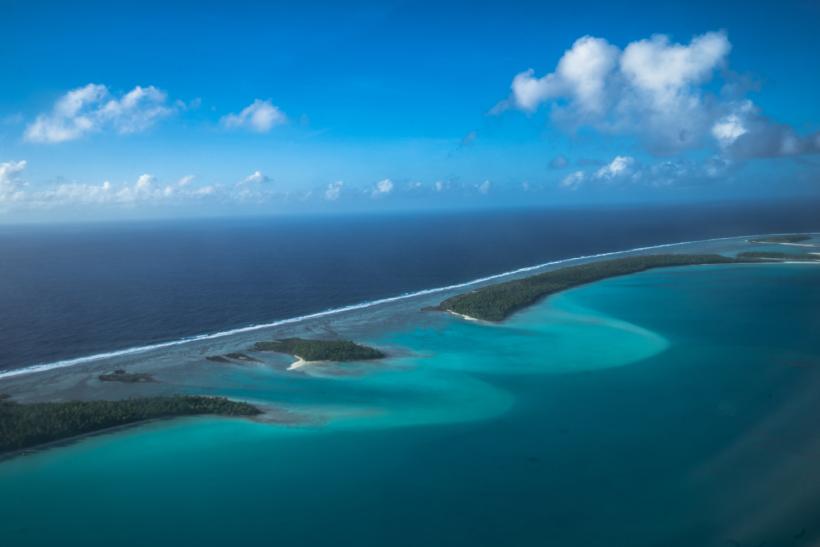Contingent Disaster Financing Drives Disaster Preparedness in the Cook Islands

The Cook Islands government has placed significant priority upon disaster preparedness - both physical and financial readiness. As a group of 15 islands dispersed across 1,800,000 km2 of ocean in the south Pacific Ocean with a total land area of only 240km2 and a population of just over 15,000, the Cook Islands is extremely vulnerable to natural hazards. The economic effects can be significant, since 60% of the country’s gross domestic product is reliant on a single hazard-sensitive sector, tourism with the country attracting over 100,000 visitors arrive annually.
Major cyclones have periodically caused substantial economic damage and loss of life. The most recent major cyclone occurred in 2010, damaging 78% of houses on the second most populous island of Aitutaki, devastating crops, disrupting tourism, and required a NZ$6.9 million recovery and reconstruction program. Cook Islands faces an average annual loss of $4.9 million from cyclones, earthquakes and tsunamis, with probable maximum losses of $56.8 million from an event with a probability of occurring once every 50 years, $103.0 million from a 1-in-100 year event, and $198.1 million from a 1-in-200 year event (World Bank. 2015. Country Note: The Cook Islands—Disaster Risk Financing and Insurance. Washington DC).
To mitigate the economic risk posed by disasters, the government has put in place arrangements to cover different layers of disaster risk financing. A disaster emergency trust fund—established in 2011 and with a current balance of NZ$1.6 million— serves as an initial source of government-allocated funds to immediately respond to disasters. Government has committed to transferring NZ$50,000 each fiscal year to this fund. Government has also taken out insurance coverage under the Pacific Catastrophe Risk Assessment and Financing Initiative (PCRAFI) for cyclones, with a 1-in-10-year probability of occurrence and payout based on the assessed severity of a specific cyclone. The country has not experienced a cyclone triggering a payout, but continues to purchase cover as an element of a broader risk financing framework.
However, these two sources of financing are unlikely to be sufficient for the government to finance all needs following a significant disaster.
In response the Asian Development Bank has provided its first contingent financing operation. The program, approved by the ADB Board in November 2016, gives the Cook Islands government access to loan funds of NZ$13.9 million ($10 million). The program will be implemented up to 31 December 2019, at which time it is expected to be renewed. The Cook Islands was considered a suitable country to pilot a disaster-contingent financing approach because it already had an effective public financial management system in place, had a stable macroeconomic environment, and was committed to improved disaster risk management.
A policy based lending (PBL) modality was selected as the preferred lending modality as it was able to put in place financing before a disaster strikes. Eligibility to access PBL financing is linked to the achievement of prior and continuing actions to strengthen disaster resilience, with access triggered by declaration of a state of emergency following a natural hazard.
The prior actions are important as the show an ongoing government commitment to disaster risk reduction. Additionally, a program monitoring framework, reviewed annually, highlighted areas of ongoing work. Together these provide a strong set of activities increasing the Cook Islands’ resilience to disasters across three broad areas:
1. Strengthened policy and institutional arrangements for disaster risk management
- National development plan incorporating disaster resilience that is gender inclusive.
- Development of the second joint national action plan for DRM and climate change adaptation.
- Ensure regular meetings of the National Disaster Risk Management Council.
- DRM plans for the outer islands and for 10 districts on Rarotonga.
- Learning modules on disaster risk management prepared and integrated into the school curriculum and phased dissemination to schools throughout the country.
- Training modules targeting key areas of DRM accountabilities relevant to each government agency, in support of Emergency Management Cook Island’s mandate.
2. Improved resilience of physical assets to disaster and climate risks
- Availability and price of services and goods for post-disaster clean-up and restoration of essential services in the event of a disaster confirmed by registered contractors.
- Development of a damage and loss database, including sex-disaggregated information, and a tracking systems for post-disaster expenditures.
- Priority infrastructure to reduce climate and disaster risks identified in national infrastructure development plan.
- Analysis of disaster and climate risks undertaken for all proposed public investment projects over NZ$150,000.
- The building code and manual finalized and emphasizes improved disaster resilience.
3. Expanded range of instruments for disaster risk financing
- Additional financial resources committed to the disaster emergency trust fund through the annual budget.
- Continued commitment to PCRAFI through allocation for annual insurance premium.
This approach is proving popular, with Palau entering into a similar arrangement to access up to $15 million in event of a disaster in November 2018.
*Image: Aerial shot of Aitutaki Island. Aitutaki is also known as Araura, Ararau, and Utataki, and is one of the most visited places in Cook Islands. Photo by ADB.
The blog post is written by Emma Veve, Director of Urban, Social Development and Public Management Division in Pacific Department and Beatrice Olsson, Country Team Leader for ADB programming in Cook Islands and Tuvalu at Asian Development Bank.